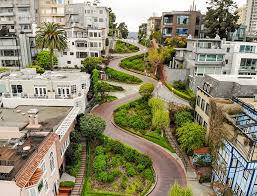The Future of Cities: Sustainable Urban Design
As our world becomes increasingly urbanised, the importance of sustainable urban design cannot be overstated. Cities are at the forefront of environmental challenges such as pollution, resource depletion, and climate change. Sustainable urban design offers innovative solutions to create cities that are not only environmentally friendly but also socially inclusive and economically vibrant.
At the heart of sustainable urban design is the concept of designing cities with a focus on reducing their environmental impact and promoting long-term sustainability. This involves integrating principles such as energy efficiency, waste reduction, green spaces, public transportation, and renewable energy sources into the planning and development of urban areas.
One key aspect of sustainable urban design is creating walkable and bike-friendly cities that encourage active transportation and reduce reliance on cars. By designing pedestrian-friendly streets, bike lanes, and greenways, cities can promote healthier lifestyles while reducing carbon emissions and traffic congestion.
Green infrastructure is another essential element of sustainable urban design. Incorporating features such as green roofs, rain gardens, permeable pavements, and urban forests helps to mitigate the heat island effect, improve air quality, manage stormwater runoff, and enhance biodiversity in urban areas.
Furthermore, sustainable urban design emphasises the importance of mixed land use development to create vibrant and resilient communities. By integrating residential areas with commercial spaces, parks, schools, and public amenities within walking distance, cities can foster social interaction, economic growth, and a sense of belonging among residents.
In conclusion, sustainable urban design is essential for creating cities that are liveable, resilient, and environmentally responsible. By embracing principles such as energy efficiency, green infrastructure, active transportation, and mixed land use development, cities can pave the way towards a more sustainable future for generations to come.
Understanding Sustainable Urban Design: Key Questions and Insights
- What is sustainable urban design?
- Why is sustainable urban design important?
- How does sustainable urban design benefit the environment?
- What are some key principles of sustainable urban design?
- How can individuals contribute to sustainable urban design in their communities?
What is sustainable urban design?
Sustainable urban design is a holistic approach to city planning and development that aims to create environmentally conscious, socially inclusive, and economically viable urban spaces. It involves integrating principles of energy efficiency, waste reduction, green infrastructure, active transportation, and mixed land use development to minimise environmental impact and promote long-term sustainability. By prioritising the well-being of both people and the planet, sustainable urban design seeks to create cities that are resilient, liveable, and capable of meeting the needs of current and future generations.
Why is sustainable urban design important?
Sustainable urban design is crucial for addressing the pressing environmental, social, and economic challenges faced by cities today. By prioritising sustainability in urban planning and development, cities can reduce their ecological footprint, mitigate climate change impacts, improve air and water quality, enhance public health, promote biodiversity, and create more resilient communities. Sustainable urban design also fosters social equity by ensuring access to green spaces, affordable housing, public transportation, and essential services for all residents. Moreover, by embracing sustainable practices, cities can drive innovation, attract investment, create jobs, and enhance quality of life for their inhabitants both now and in the future.
How does sustainable urban design benefit the environment?
Sustainable urban design offers a multitude of benefits to the environment by integrating eco-friendly practices into the planning and development of cities. By prioritising energy efficiency, sustainable urban design reduces carbon emissions and energy consumption, leading to a decrease in air pollution and greenhouse gas emissions. The incorporation of green spaces, such as parks and urban forests, helps improve air quality, mitigate the heat island effect, and enhance biodiversity. Additionally, features like green roofs, rain gardens, and permeable pavements aid in managing stormwater runoff and preventing water pollution. Overall, sustainable urban design plays a crucial role in preserving natural resources, protecting ecosystems, and creating healthier environments for both people and wildlife.
What are some key principles of sustainable urban design?
When exploring the key principles of sustainable urban design, several foundational concepts emerge as essential for creating environmentally conscious and liveable cities. These principles include promoting walkability and active transportation to reduce reliance on cars, integrating green infrastructure to improve air quality and manage stormwater runoff, fostering mixed land use development to create vibrant communities, prioritising energy efficiency in building design and urban planning, and emphasising social equity and inclusivity in city development initiatives. By adhering to these principles, cities can pave the way for a more sustainable future that prioritises the well-being of both residents and the environment.
How can individuals contribute to sustainable urban design in their communities?
Individuals play a crucial role in contributing to sustainable urban design within their communities. One impactful way individuals can contribute is by advocating for and supporting local initiatives that promote sustainable practices, such as community gardens, bike-sharing programs, or renewable energy projects. By participating in community planning meetings and engaging with local policymakers, individuals can voice their opinions on urban development projects that prioritise sustainability. Additionally, adopting eco-friendly habits in daily life, such as using public transportation, reducing waste, and supporting local businesses, can collectively make a significant difference in creating more sustainable and liveable urban environments for everyone.

